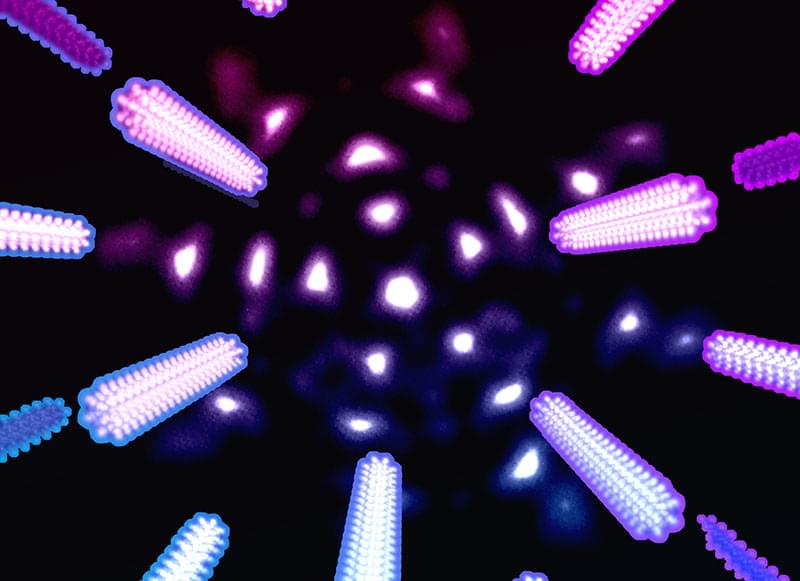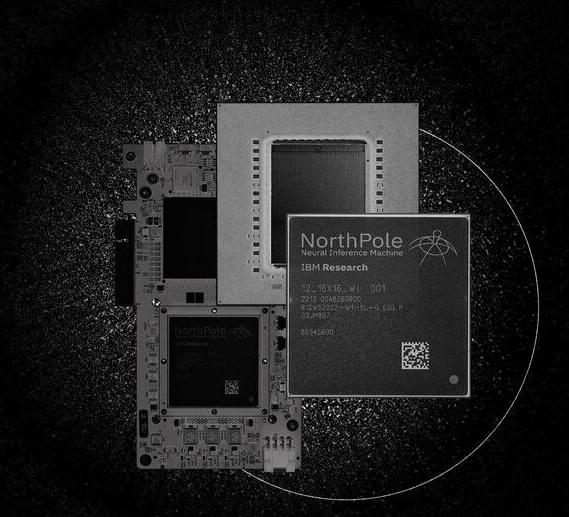This may be about as wildly entertaining, disruptive and philosophically profound as legitimate scientific research gets. Michael Levin’s work in cellular intelligence, bioelectrical communication and embodied minds “is going to overturn everything.”
Get the latest international news and world events from around the world.


New method developed for measuring thermal expansion in atomically thin materials
Advanced materials, including two-dimensional or atomically thin materials just a few atoms thick, are essential for the future of microelectronics technology. Now a team at Los Alamos National Laboratory has developed a way to directly measure such materials’ thermal expansion coefficient, the rate at which the material expands as it heats. That insight can help address heat-related performance issues of materials incorporated into microelectronics, such as computer chips.
The research has been published in ACS Nano (“Direct measurement of the thermal expansion coefficient of epitaxial WSe 2 by four-dimensional scanning transmission electron microscopy”).
“It’s well understood that heating a material usually results in expansion of the atoms arranged in the material’s structure,” said Theresa Kucinski, scientist with the Nuclear Materials Science Group at Los Alamos. “But things get weird when the material is only one to a few atoms thick.”

Brian Greene: The Most Important Question in Science
Join my mailing list https://briankeating.com/list to win a real 4 billion year old meteorite! All.edu emails in the USA 🇺🇸 will WIN!
What would Brian Greene do if he could travel through time, and which future technology is he most excited about?
After our full interview, I had the privilege to sit down with Brian and ask him a few more questions. Enjoy this exclusive Q\&A with one of the most renowned physicists of our time!
And if you haven’t already, check out our full interview: • Brian Greene: The Truth About String…
Brian Greene is an American theoretical physicist and mathematician. He’s a professor at Columbia University and the director of Columbia’s Center for Theoretical Physics. He has gained a lot of popularity through his books that bring complex physical issues closer to general audiences: The Elegant Universe (1999), Icarus at the Edge of Time (2008), The Fabric of the Cosmos (2004), and The Hidden Reality (2011), a book he promoted in the TV show The Big Bang Theory!
Additional resources:

Video Shows China’s Rifle-Equipped Robot Dog Opening Fire on Targets
China has released video footage of its rifle-toting robot dogs, and it’s about as scary as you were probably imagining.
Last week, Agence France-Presse reported that China had flaunted the gun-carrying robodogs in a 15-day joint military exercise with Cambodia dubbed the “Golden Dragon.”
And if images of the literal killing machines weren’t troubling enough, a new video of the robots released yesterday by the state-owned broadcaster China Central Television shows the killing machine dutifully hopping and diving, leading teams in reconnaissance, and shooting its back-strapped machine gun at targets.
Epic Expansion: The Case for Inflationary Cosmology
For decades, inflation has been the dominant cosmological scenario, but recently the theory has been subject to competition and critique. Two renowned pioneers of inflation — Alan Guth and Andrei Linde — join Brian Greene to make their strongest case for the inflationary theory.
This program is part of the Big Ideas series, supported by the John Templeton Foundation.
Participants:
Alan Guth.
Andrei Linde.
Moderator:
Brian Greene.
00:00 — Introduction.
05:58 — Participant introductions.
08:23 — Problems with the Big Bang.
28:07 — Realizing the Inflationary Paradigm.
42:13 — Observational Support for the Inflationary Theory.
56:37 — Eternal Inflation and the Measure Problem.
01:17:09-The Future of Cosmology.
This machine creates artificial vision for the blind
Second Sight’s Orion system bypasses the eyes to bring artificial vision directly to the brain. Working prototypes are being tested right now in six blind individuals.
#WhatTheFuture #ArtificialVision #MedicalTech.
CNET playlists: / cnettv.
Download the new CNET app: https://cnet.app.link/GWuXq8ExzG
Like us on Facebook: / cnet.
Follow us on Twitter: / cnet.
Follow us on Instagram: http://bit.ly/2icCYYm

Exploring the Emergent Abilities of Large Language Models
Emergence, a fascinating and complex concept, illuminates how intricate patterns and behaviors can spring from simple interactions. It’s akin to marveling at a symphony, where each individual note, simple in itself, contributes to a rich, complex musical experience far surpassing the sum of its parts. Although definitions of emergence vary across disciplines, they converge on a common theme: small quantitative changes in a system’s parameters can lead to significant qualitative transformations in its behavior. These qualitative shifts represent different “regimes” where the fundamental “rules of the game”-the underlying principles or equations governing the behavior-change dramatically.
To make this abstract concept more tangible, let’s explore relatable examples from various fields:
1. Physics: Phase Transitions: Emergence is vividly illustrated through phase transitions, like water turning into ice. Here, minor temperature changes (quantitative parameter) lead to a drastic change from liquid to solid (qualitative behavior). Each molecule behaves simply, but collectively, they transition into a distinctly different state with their properties.